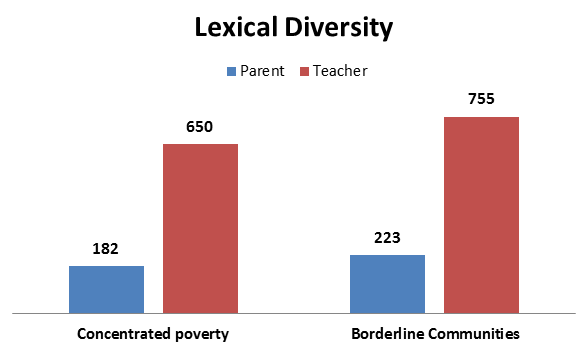"Double Dose of Disadvantage"
"Education for all" means "all". And "all" does not mean only the children in a given classroom or school. All means all. Sadly, inequity often exists between schools. Children born in poverty are at a educational disadvantage because of the limited opportunities they have before they attend school. In terms of vocabulary alone, parents in these homes have lower educational attainment and speak less words to their young children. Making matters worse, there is socio-economic segregation. Children from poor households find themselves living in poor neighborhoods. These children therefore end up attending poor schools. This dramatic inequity in education is highlighted in a recent paper by Neuman, Kaefer and Pinkham, A Double Dose of Disadvantage: Language Experiences for Low-Income Children in Home and School.
The study looks at two neighborhoods: communities of concentrated poverty (i.e., poverty rates over 40%) and borderline communities (i.e., poverty rates of 20–40%). In one measure, lexical diversity (number of word types), children from poor neighborhoods hear less variety of words both from their parents and teacher:
Thus, a poor child not only receives one dose of disadvantage while preparing for school, but another one right at school. This is the inequity in education that often exists not just in the United States, but in other countries as well. It is one major reason why poverty has a very strong grip on basic education. It is a problem that unfortunately cannot be addressed by a teacher, or even a principal. It is a problem that society as a whole must address.
The study looks at two neighborhoods: communities of concentrated poverty (i.e., poverty rates over 40%) and borderline communities (i.e., poverty rates of 20–40%). In one measure, lexical diversity (number of word types), children from poor neighborhoods hear less variety of words both from their parents and teacher:
Thus, a poor child not only receives one dose of disadvantage while preparing for school, but another one right at school. This is the inequity in education that often exists not just in the United States, but in other countries as well. It is one major reason why poverty has a very strong grip on basic education. It is a problem that unfortunately cannot be addressed by a teacher, or even a principal. It is a problem that society as a whole must address.

Comments
Post a Comment